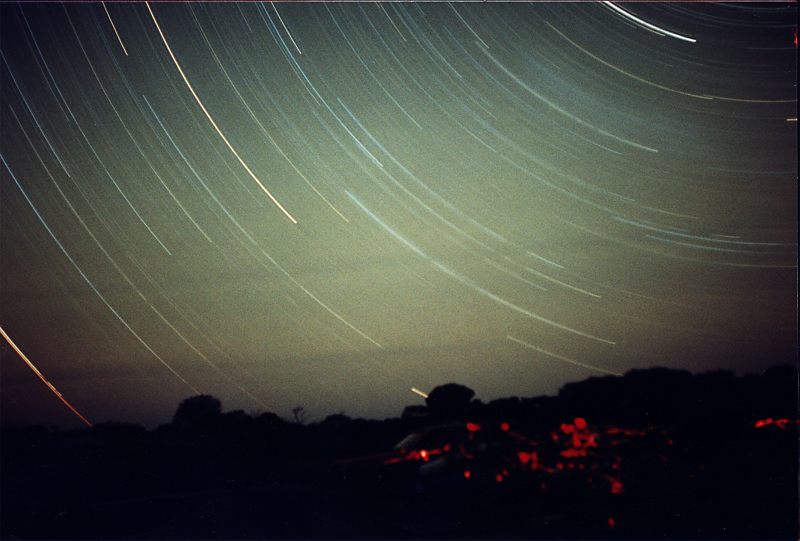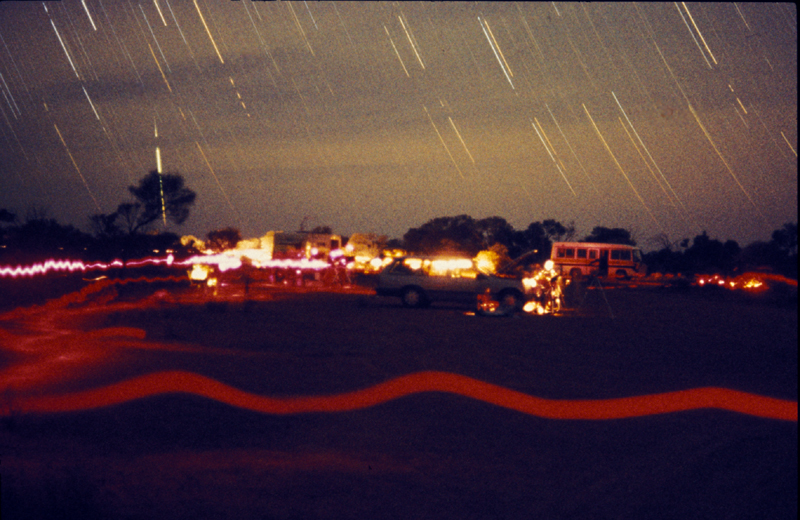
145 minute exposure, Kodak Ektachrome 400 slide film.
50mm f/2 Yashica lens.

The skies at Meeline are seriously dark. At times a naked eye limiting magnitude of 7.5 was observed. Under these conditions the Milky Way in the region of Scorpius and Sagittarius was so bright it would cast distinct shadows.
This image is looking south east. The bright trail at the top is the 3rd magnitude star beta hydrus. This is the closest bright star to the south celestial pole at declination -77. A little below this trail is a faint bluish haze and a slightly broarder trail than the other stars. These are the Small Magellanic Cloud , and NGC 104 or 47 tucanae. The bright star just appearing behind the trees is Achenar, while at the extreme left is alpha grus.
The photograph is over 2 hours in length yet the ground is still very dark!
My first visit to Meeline Station was in 1986. I stayed there for a week to observe comet Halley while on a comet Halley lecture tour of rural Western Australia. Quite a number of friends from Western Australia were there, including several school groups, as were several observers from Japan. It was here that I first met well-known astrophotographer Akira Fujii.

Unfortunately, many of the people who were there were not astronomers, and they would not always be as careful with their lights as some of us wanted, as can be seen in this photograph. One surprise from this photograph was the capture of the very bright meteor at the lower right. Not a single observer had seen this.